Summary of the Day:
Ukrainian forces successfully repelled a large-scale Russian mechanized assault in the Kupyansk direction on September 26, marking the first such attack along the Kupyansk-Svatove-Kreminna line since Winter 2024. Russian forces are intensifying efforts to reach the Oskil River, though advances are expected to remain gradual. The Russian military command appears content with slow progress in this area.
Russia is actively attempting to influence Western debates about allowing Ukraine to use long-range strike capabilities against Russian military targets. This suggests concern about the potential impact on their operations in Ukraine. However, US officials remain hesitant to permit such strikes.
In diplomatic news, China announced a new “Friends of Peace” initiative to promote its alternative peace plan for Ukraine. Meanwhile, Ukrainian President Zelensky continued high-level meetings with US officials during his visit to the United States on September 26 and 27.
On the ground, Russian forces made minor advances near Toretsk and southeast of Pokrovsk. Russian authorities continue to face challenges with frontline communications among their troops.
Picture of the Day:
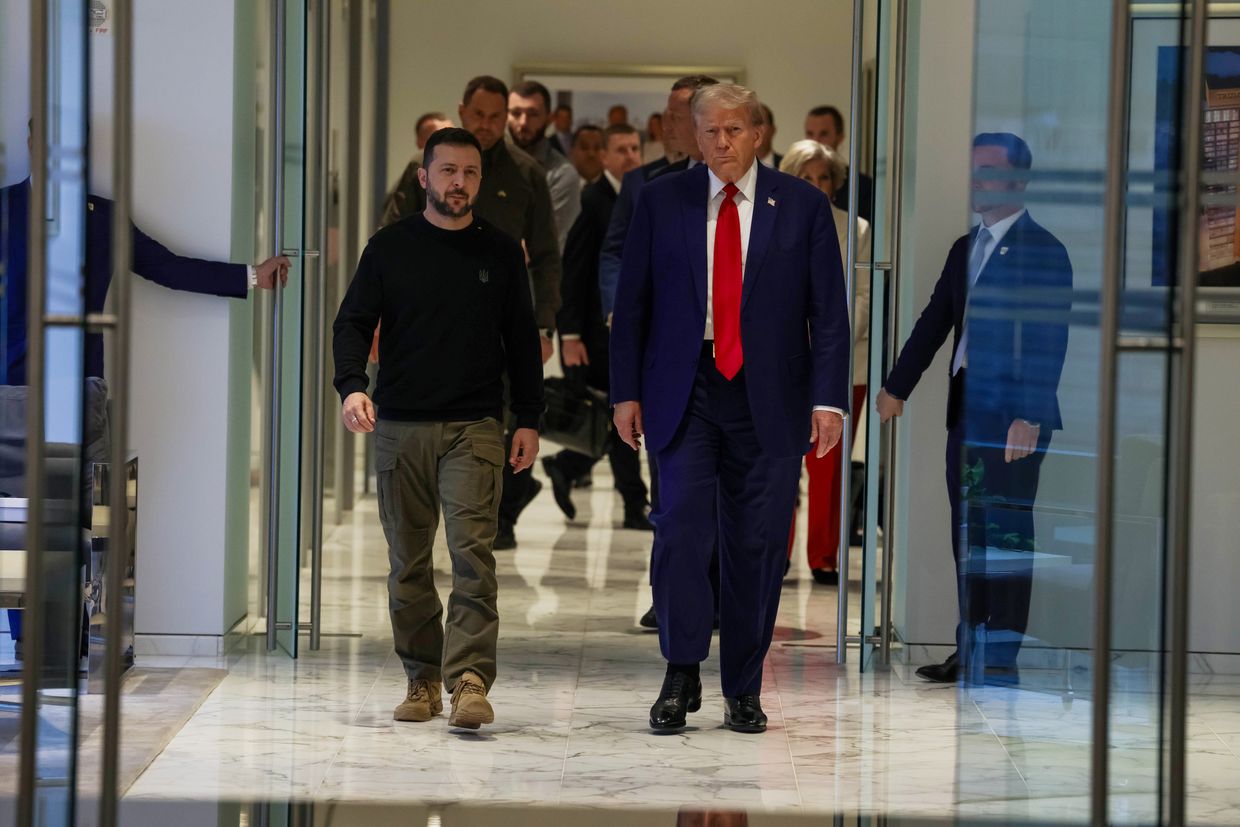
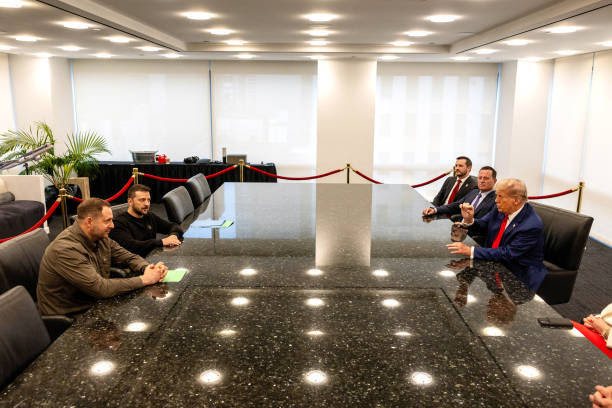 Ukrainian President Volodymyr Zelensky and Republican presidential nominee, former U.S. President Donald Trump, gather for a meeting in New York City. (Alex Kent/Getty Images)
Ukrainian President Volodymyr Zelensky and Republican presidential nominee, former U.S. President Donald Trump, gather for a meeting in New York City. (Alex Kent/Getty Images)
Beyond Ukraine – The March Towards World War
The recent developments involving Belarus and Russia signal an escalation in geopolitical tensions, particularly in Eastern Europe. Belarus’s participation in the CSTO military exercises in Kazakhstan demonstrates the strengthening of military ties among Russia’s allies, potentially as a counter to NATO influence in the region. This move, coupled with Belarusian leader Alexander Lukashenko’s provocative statement that an attack on Belarus would trigger World War III, heightens concerns about potential conflict escalation.
Russia’s revision of its nuclear doctrine, as announced by President Putin, marks a significant shift in global security dynamics. The new stance, which allows for nuclear responses to conventional attacks and treats any assault by a nuclear-armed nation as coordinated, dramatically lowers the threshold for nuclear weapon use. This change is likely a direct response to Western support for Ukraine and discussions about providing long-range missiles to Kyiv.
The alleged deployment of Russian nuclear weapons in Belarus further complicates the security landscape in Eastern Europe. This move not only increases the strategic importance of Belarus in Russia’s military calculations but also raises the stakes in any potential conflict involving NATO countries. Lukashenko’s claim of NATO troop presence on the Polish-Belarusian border, whether accurate or not, serves to justify closer military integration with Russia and amplifies the narrative of Western encroachment.
These developments collectively contribute to a more volatile international environment, with increased risk of miscalculation and potential for rapid conflict escalation. The situation underscores the growing tensions between Russia and the West, with Belarus playing a pivotal role as a frontline state in this geopolitical confrontation.
The Path to Peace
China has unveiled a new diplomatic initiative called “Friends of Peace,” aimed at promoting “inclusive dialogue” to end the war in Ukraine. The initiative involves Brazil, Pakistan, and other “like-minded” countries from the global south. This move comes as China continues to promote its own alternative peace plan for Ukraine, which Russia has used to appear open to negotiations while maintaining aggressive stances.
Meanwhile, Paraguay has become the 95th country to sign the global peace summit joint communiqué, initially endorsed by 78 states and four organizations at a Swiss-hosted summit in June. Ukrainian President Volodymyr Zelensky welcomed Paraguay’s endorsement, expressing hope for deeper dialogue with more South American countries.
The communiqué outlines several key demands, including the return of the Zaporizhzhia Nuclear Power Plant to Ukrainian control, ensuring food supply from Ukraine, securing access to Black and Azov Sea ports, releasing prisoners of war, and returning deported Ukrainian children.
Ukraine is planning a second peace summit before the end of 2024, with potential locations in the Middle East or India. However, Russia has already signaled its unwillingness to participate in future iterations of the Swiss-hosted peace summit.
Analysts suggest that Russia is likely to support China’s new “Friends of Peace” platform to portray Ukraine as unwilling to negotiate, while simultaneously rejecting talks or insisting on terms that amount to Ukraine’s capitulation. This development adds another layer to the complex diplomatic efforts surrounding the ongoing conflict in Ukraine.
Situation On The Land, Sea, and Air in Ukraine
In recent developments, U.S. intelligence reports suggest that Russia might respond to Ukraine’s use of Western long-range weapons on Russian soil with sabotage in Europe or attacks on U.S. and allied bases. This potential retaliation could allow Moscow to inflict damage while avoiding large-scale conflict.
The debate over providing Ukraine with long-range strike capabilities has intensified following a meeting between Presidents Biden and Zelensky. U.S. officials remain hesitant, citing intelligence assessments that downplay the potential impact due to Ukraine’s limited number of such weapons.
Russian President Vladimir Putin has recently updated Russia’s nuclear doctrine, potentially allowing nuclear retaliation against Ukraine if it uses Western weapons to strike Russia. Putin has also warned that such strikes could escalate the war and directly involve Western countries, reviving narratives that have previously led to Western self-deterrence and delays in security assistance to Ukraine.
Despite these threats, some U.S. military and administration officials argue that allowing long-range strikes could force Russia to relocate key military assets, complicating their supply lines in Ukraine. This scenario is reminiscent of Summer 2022, when Ukrainian HIMARS strikes on Russian ammunition depots in occupied Ukraine led to dispersed storage and reduced logistical efficiency.
Meanwhile, Russia is reportedly strengthening defenses around the Crimean Bridge. The Crimean Wind Telegram channel claims metal structures, possibly underwater drone traps, have been installed over the past month. Ukraine’s Navy spokesperson Dmytro Pletenchuk confirmed that Russia is building a new structure near the bridge but couldn’t specify its purpose.
The 19-kilometer Crimean Bridge, completed in 2018 after Russia’s illegal occupation of Crimea, has been a crucial supply route and target of Ukrainian attacks. Ukraine is said to be developing an underwater drone called Marichka, potentially for such operations. The bridge is currently subject to a dispute between Ukraine and Russia at the Permanent Court of Arbitration.
In addition to these developments, Russian forces are reportedly constructing new defensive structures along the beach near occupied Andriivka-Uhlove, north of Sevastopol in Crimea.
As the situation evolves, Western policymakers continue to weigh the potential benefits of allowing Ukraine to use long-range weapons against targets in Russia against the risks of Russian retaliation. The ongoing debate reflects the complex dynamics of the conflict and its potential implications for global security.
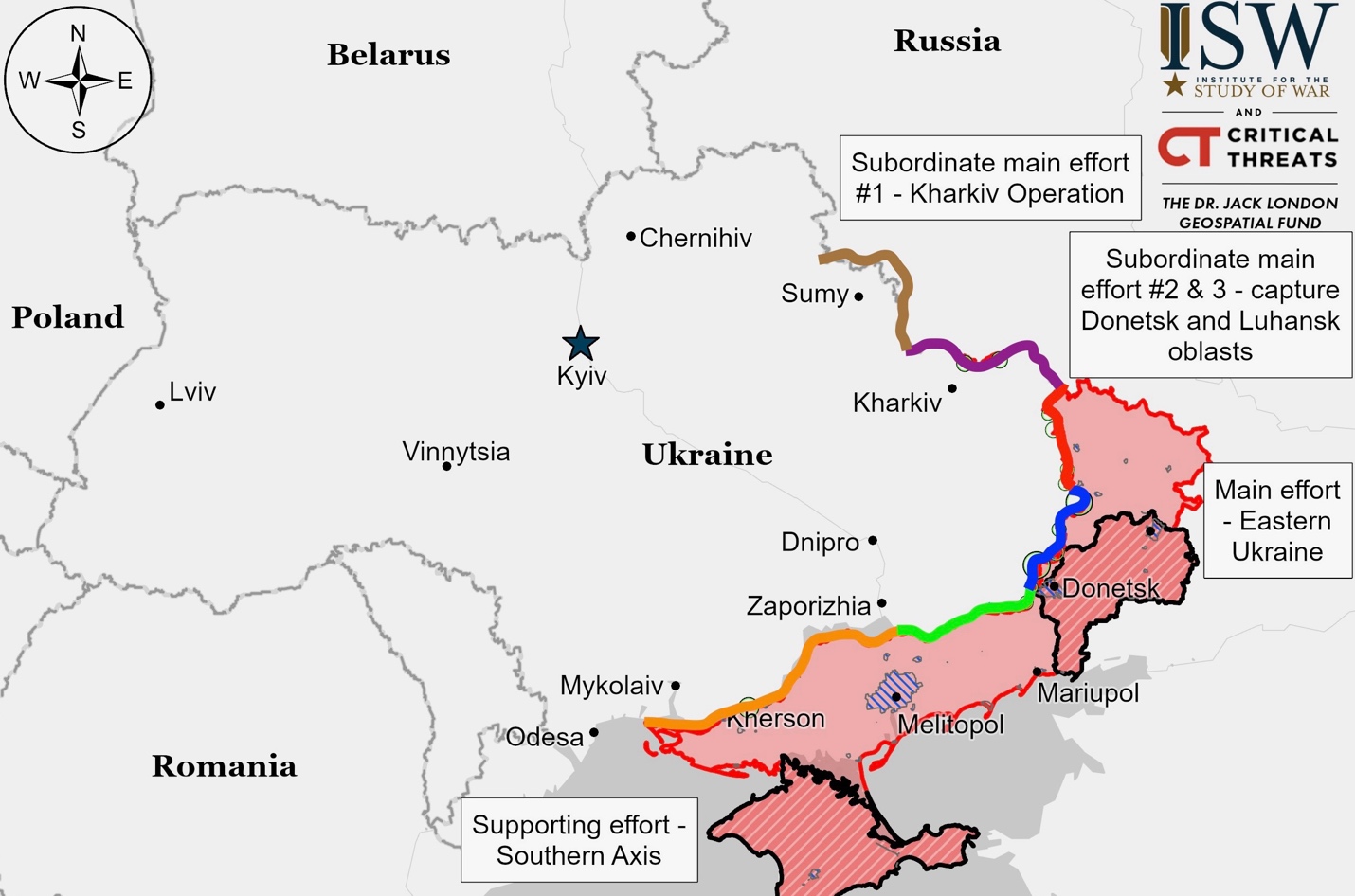
Ukrainian Operations in the Russian Federation – Initiative None
In a series of recent military operations, Ukrainian forces have launched ground attacks in Russia’s Kursk Oblast, targeting several settlements including Veseloye, Krasnooktyabrskoye, Novy Put, and Medvezhye. Russian officials claim they successfully repelled these assaults and even mounted a counterattack near Novy Put. However, no confirmed Ukrainian advances have been reported in these areas.
The Ukrainian offensive in Kursk Oblast continued, with forces focusing their efforts on areas near Lyubimovka and Plekhovo. Despite these sustained attacks, no confirmed advances were made by Ukrainian troops. Russian sources reported repelling these attacks southeast of Korenevo and south of Sudzha.
In response to the Ukrainian incursions, Russian forces launched counterattacks in the Ukrainian-held areas of Kursk Oblast. These operations targeted Plekhovo, Lyubimovka, Darino, and Nikolayevo-Daryino. While Russian sources claimed progress near Plekhovo, no confirmed territorial gains have been reported. The ongoing conflict has shifted to forested areas between Plekhovo and Borki, where Russian advances have been significantly slowed by extensive minefields laid by Ukrainian forces.
The situation in Kursk Oblast remains fluid, with both sides engaged in offensive and defensive operations. As the conflict continues, the lack of independently verified territorial changes suggests a current stalemate in this region of the Russia-Ukraine border.
Kharkiv Front – Initiative Russia
Russian forces made a small advance north of Kharkiv City near Zelene, while continuing attacks in the area. Ukrainian forces repelled a Russian mechanized assault. In Vovchansk, Russian troops are digging tunnels to hide movements. Russian attacks continued near Hlyboke, Starytsya, Vovchansk, and Tykhe. Ukrainian officials report Russian forces are defensive in some areas but preparing for future assaults in others.
Luhansk Front – Initiative Russia
In a significant development along the Kupyansk-Svatove-Kreminna line, Ukrainian forces successfully repelled a large-scale Russian mechanized assault near Kupyansk on September 26, 2024. The attack, involving approximately 50 armored vehicles divided into two columns, targeted areas around Pishchane, Kolisnykivka, and Kruhlyakivka. Ukrainian troops reported destroying or damaging numerous Russian vehicles during the engagement. Footage from the scene showed Russian armor crowded together, a tactical error often associated with failed assaults.
This operation marks the first major Russian mechanized attack in the Kupyansk-Svatove-Kreminna area since last winter. Between January and February 2024, Russian forces had launched several large, mechanized assaults along this line, with the last major attack occurring west of Kreminna in late January. Since then, Russian operations in this area have primarily consisted of smaller infantry assaults and occasional platoon-size mechanized attacks, with overall activity being less intense compared to other parts of Ukraine.
Recently, Russian forces have intensified their efforts to reach the Oskil River, focusing on advancing towards Kolisnykivka and Kruhlyakivka from a small salient around Pishchane. While they’ve made some progress along a ravine east of Pishchane and in nearby fields, they continue to struggle with direct eastward advances towards their target settlements. The recent large-scale mechanized assault may have been an attempt to quickly secure positions within Kolisnykivka and Kruhlyakivka, potentially allowing Russian infantry to establish a foothold on the Oskil River.
The Russian strategy involves four coordinated axes of advance along the Kupyansk-Svatove-Kreminna line. Their aim is to establish a foothold on the Oskil River near Kolisnykivka and Kruhlyakivka, which would create narrow Ukrainian salients between Kupyansk-Vuzlovyi and Hlushkivka, and south of Kruhlyakivka. However, even if successful, this may not significantly accelerate Russian advances in the area. Ukrainian forces have demonstrated their ability to conduct effective counterattacks, particularly near Nevske and in the Kreminna area.
Since winter 2024, Russian forces have maintained a steady, albeit slow, offensive towards the Oskil River along this line. The Russian military command appears to have adopted a strategy of gradual gains, prioritizing sustainability over rapid advances. They have periodically slowed operations to allow units to rest and rotate, indicating a long-term commitment to this offensive despite occasional pauses.
This approach aligns with the broader strategy of Russian President Putin and military leaders, who believe they can achieve victory in Ukraine through slow, continuous advances. Their goal to push Ukrainian forces off the east bank of the Oskil River is considered operationally significant, as it would create a defensible front and potentially free up Russian forces for other operations.
However, the Russian Western Grouping of Forces, primarily consisting of Moscow Military District units, faces limitations in its ability to intensify or accelerate its offensive along the Kupyansk-Svatove-Kreminna line. The group has been weakened by troop redeployments to other areas, including northern Kharkiv Oblast and Kursk Oblast. The 1st Guards Tank Army now covers a wider area from northeast of Kupyansk to west of Svatove, while the 20th Combined Arms Army operates southwest of Svatove to west of Kreminna. Despite creating an operational reserve, the group likely lacks the capacity for sustained, intensified operations.
Past failures in mechanized assaults suggest the Western Grouping of Forces has not effectively learned from tactical mistakes, potentially impacting their future operational effectiveness in this region.
Donetsk Front – Initiative Russia
Siversk
Russian forces continued offensive operations around Siversk. They attacked near Bilohorivka to the northeast, Verkhnokamyanske to the east, and Spirne to the southeast. However, these attacks did not result in any reported advances.
Chasiv Yar
Russian forces attacked near Chasiv Yar targeting Hryhorivka and Minkivka to the north, and Stupochky and Bila Hora to the south. Despite claims of capturing a height near Chasiv Yar, no confirmed advances were made. A Russian source noted that defensive positions, the Siverskyi Donets-Donbas Canal, and forested areas are hindering Russian progress, while Ukrainian forces maintain advantages in drone operations and urban combat in the area.
Toretsk
Russian forces made confirmed advances in and around Toretsk. They progressed in eastern Toretsk along Darvina and Pushkarenko streets, with claims of further advances along Heroiv Pratsi and Pyaboshapky streets. Russian forces also captured Zalizne, southeast of Toretsk. Offensive operations continued near Toretsk and in surrounding areas, including Leonidivka and Shcherbynivka to the southwest.
Pokrovsk
Russian forces advanced southeast of Pokrovsk. They captured the Novohrodivska No. 1/3 mine west of Novohrodivka and reportedly seized Marynivka. Offensive operations continued in various settlements around Pokrovsk, including Zelene Pole, Krutyi Yar, Vozdvyzhenka, Novotoretske, Hrodivka, Dachenske, Selydove, Mykolaivka, Lysivka, Krasnyi Yar, Tsukuryne, and Zhelanne Druhe. Russian forces are also reportedly mining Ukrainian supply routes near Mykolaivka.
West of Donetsk City
Russian forces reportedly continued offensive operations near Heorhiivka, west of Donetsk City. However, there were no confirmed changes to the frontline in this area.
Southwest of Donetsk City
Russian sources claimed advances in and around Vuhledar, particularly in its eastern, western, and northwestern areas. Ukrainian reports confirmed ongoing Russian offensives near Paraskoviivka, Kostyantynivka, Katerynivka, Vuhledar, Bohoiavlenka, and Vodyane. A Ukrainian commander described frequent Russian attacks using vehicle columns west of Vuhledar.
Zaporizhia Front – Initiative Russia
Zaporizhia-Donetsk Border Area
Russian forces reportedly launched an attack near Novodarivka, southwest of Velyka Novosilka. However, this attack did not result in any territorial gains for the Russian forces.
Zaporizhia Line
Positional fighting continued in western Zaporizhia Oblast near Novoandriivka, Mali Shcherbaky, and Robotyne, but without confirmed frontline changes. Russian “Valkyrie” Special Detachment is reportedly directing artillery fire near Kamyanske. Russian sources claimed Ukrainian MLRS attacks on Tokmak.
Kherson (Dnipro River) Front – Initiative Russia
The Ukrainian General Staff reported that Russian forces launched multiple attacks in the Dnipro (Kherson) direction.
Ukraine News
Russian forces launched multiple drone and missile strikes against Ukraine, firing an Iskander-M ballistic missile from Crimea, two Kh-22 cruise missiles over the Black Sea, and 32 Shahed drones from Krasnodar Krai. Ukrainian air defense successfully intercepted 24 Shahed drones over Dnipropetrovsk, Mykolaiv, and Odesa oblasts, with one drone briefly entering Romanian airspace. The attacks also targeted residential areas in Izmail, Odesa Oblast, and Starokostiantyniv in Khmelnytskyi Oblast.
In a separate overnight assault, Russian forces deployed 32 Shahed drones, an Iskander-M/KM-23 ballistic missile, and two X-22 cruise missiles. Ukrainian defenses managed to intercept 24 drones, but the strikes resulted in three civilian casualties and injured 11 others, including a child. This attack followed an earlier barrage on Thursday, where Russia launched 78 Shahed drones and six missiles, primarily targeting Kyiv and its surrounding region.
Amidst these military actions, Ukrainian President Volodymyr Zelensky continued his diplomatic mission in the United States. His itinerary included meetings with a bipartisan Senate delegation and President Joe Biden on September 26, followed by discussions with Vice President Kamala Harris and former President Donald Trump on September 27. In his meeting with Trump in New York City, Zelensky presented his “victory plan” and emphasized the need to pressure Russian President Vladimir Putin to end the war. While Trump expressed support for a swift end to the conflict, he avoided specific commitments.
Zelensky’s visit to the Scranton Army Ammunition Plant drew criticism from Republican leaders, who accused him of election interference. Despite previous disagreements with Trump’s stance on the war, Zelensky expressed gratitude for the opportunity to discuss Ukraine’s key issues with U.S. leaders.
On the domestic front, Ukraine has launched uResidency, a program allowing foreigners to start businesses in the country remotely. Announced by Digital Transformation Minister Mykhailo Fedorov, the initiative offers a 5% tax on profits and remote registration for individual entrepreneurs. Initially available to citizens of India, Pakistan, Thailand, and Slovenia, the program aims to attract foreign investment and support Ukraine’s economy. It forms part of Ukraine’s “state in a smartphone” concept, which includes the Diia app for government services.
In other news, Ukraine’s Ombudsman Dmytro Lubinets refuted reports of a Qatar-brokered “exchange” of children with Russia. Lubinets denied an AFP report claiming nine children and one adult returned to Ukraine while four children were to be reunited with families in Russia, calling the reports “Russian narratives.” He clarified that Ukraine doesn’t hold Russian children and doesn’t prevent their return to Russia. According to the Children of War database, over 19,500 Ukrainian children have been abducted by Russia since the invasion began, with less than 400 returned home.
Lastly, Ukraine’s government has appointed Serhii Sukhomlyn, the former mayor of Zhytomyr, as the new head of infrastructure development. This appointment follows the resignation of the previous controversial leader and represents a significant change in the leadership of Ukraine’s infrastructure development efforts. Sukhomlyn brings experience from his time as mayor of Zhytomyr, a city in northern Ukraine, to this important role overseeing crucial infrastructure projects in the country.
Innocent Victims Of War
The casualty count of civilians in the past 24 hours: (Russian War Crimes)
DEATHS: 10 INJURIES: 44+
A series of Russian attacks across Ukraine has resulted in multiple casualties and widespread damage in several regions. The port city of Izmail in Ukraine’s Odesa region was struck, resulting in the deaths of three civilians, including two women and a 73-year-old man. Eleven others were injured in the attack, among them a child. The assault caused significant damage to homes, cars, and other structures, igniting several fires in the area near the Romanian border.
In Kryvyi Rih, located in Dnipropetrovsk Oblast, a Russian missile hit a police department, claiming the lives of two people and injuring at least six others, according to local officials. Governor Serhii Lysak and military administration head Oleksandr Vilkul reported that search and rescue operations are ongoing, with the possibility of three individuals being trapped in the rubble. The attack occurred shortly after an air raid alert was sounded in the city.
The capital city of Kyiv was not spared from the onslaught. In the Pechersk district, an attack sparked a fire in a five-story building, damaging apartments and vehicles. The city’s air defense systems were actively engaged in countering the threats.
The eastern region of Donetsk Oblast also suffered casualties, with four people killed in the towns of Toretsk, Chasiv Yar, and Siversk. A total of 11 people were injured across the region. In Kharkiv city, five individuals were wounded in an attack, while three men were hurt in other parts of Kharkiv Oblast.
The southern region of Kherson Oblast saw widespread attacks, with 24 settlements targeted. These assaults resulted in one death and left 19 people injured.
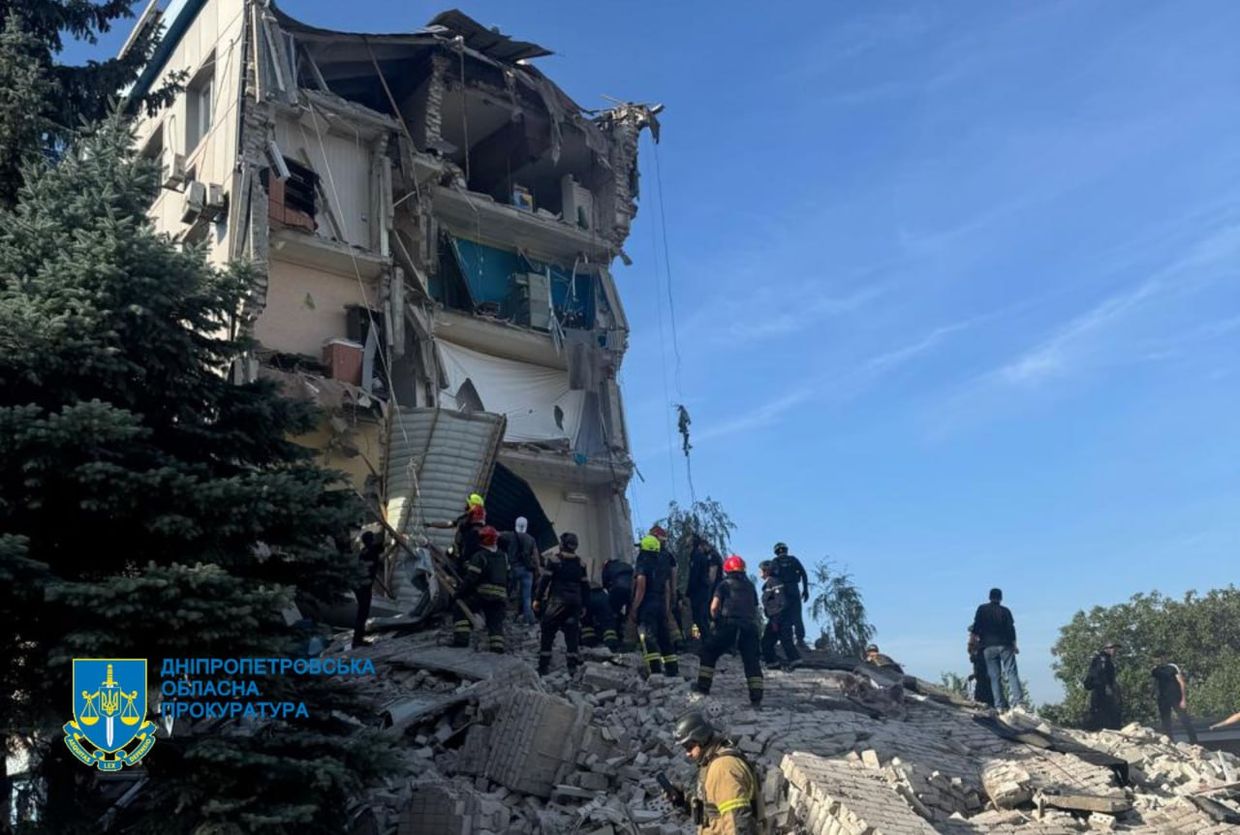 The aftermath of a Russian attack on a district police department in the city of Kryvyi Rih in Dnipropetrovsk Oblast, Ukraine. (Dnipropetrovsk Oblast Prosecutor’s Office)
The aftermath of a Russian attack on a district police department in the city of Kryvyi Rih in Dnipropetrovsk Oblast, Ukraine. (Dnipropetrovsk Oblast Prosecutor’s Office)
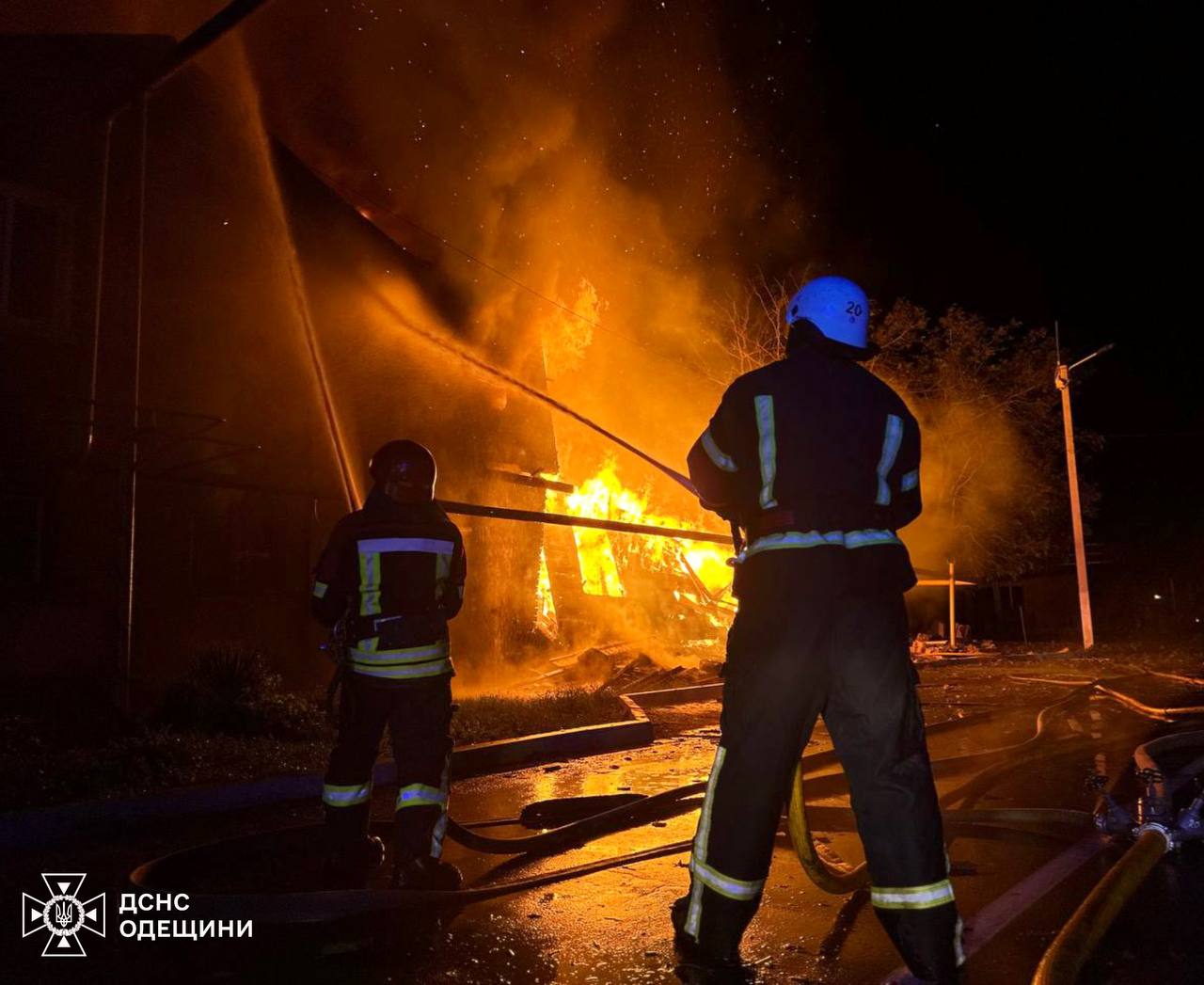 The aftermath of a Russian attack on the town of Izmail in Odesa Oblast overnight. (Ukraine’s State Emergency Service)
The aftermath of a Russian attack on the town of Izmail in Odesa Oblast overnight. (Ukraine’s State Emergency Service)
Ukrainian Mobilization and Industrial Defense Base
Ukrainian soldiers are facing challenges with extended deployments and limited rotations, leading to increased cases of desertion. Over 60,000 criminal cases for unauthorized absence have been initiated since 2022. Soldiers report serving for years without adequate rest, causing fatigue and low morale. A new mobilization law has improved recruitment, with over 4 million men updating their data, but training capacity is limited. The military is struggling to provide sufficient reinforcements and proper training for new recruits. There are calls for a comprehensive approach to address these issues, including potential demobilization legislation and improved rotation policies, but implementing mass mobilization remains challenging due to economic concerns.
Ukraine’s Allies
The UK is increasing its military aid to Ukraine, now sending 16 AS-90 self-propelled howitzers instead of the initially planned 12. Ten have already been delivered, with six more to follow soon. The AS-90 is a powerful artillery piece capable of firing NATO standard 155mm shells up to 30 kilometers. The UK has also committed to providing £3 billion annually in military support to Ukraine until at least 2030/31. Additionally, the UK announced new sanctions against five Russian vessels and two entities involved in shipping Russian liquefied natural gas, aiming to curb funding for Russia’s war efforts.
Life in Russian-Occupied Ukraine
Colonel Vladyslav Voloshyn, spokesperson for the Ukrainian Tavriisk Group of Forces, reported on September 26 that Russian forces, including Rosgvardia personnel, are using the occupied Zaporizhzhia Nuclear Power Plant (ZNPP) as a training base for drone crews. This move appears to be an attempt to shield these forces from Ukrainian attacks, continuing Russia’s pattern of militarizing the ZNPP.
Russia News
From September 23 to 26, HUR conducted cyberattacks on over 800 Russian servers, targeting military, administrative, and financial institutions. These attacks resulted in the destruction of data and disrupted operations across various sectors. Two major Russian banks, Rosselkhozbank and Moscow Credit Bank, were particularly affected on September 23, with their internet banking services and mobile applications disabled.
This cyber campaign follows a pattern of previous attacks by HUR, including the hacking of Russian TV servers in August and assaults on internet networks in early September. In a notable operation on September 13, HUR, in collaboration with “VO Team” hackers, breached a Russian digital signature certification center. The hackers left a message indicating that proceeds from the sale of acquired data would be used to support Ukrainian forces.
Meanwhile, in a significant economic development, India has decided against purchasing liquefied natural gas (LNG) from Russia’s Arctic LNG 2 project, which is currently under Western sanctions. Indian Oil Secretary Pankaj Jain made it clear that India will not buy any sanctioned commodities. This decision is particularly noteworthy given that the Arctic LNG 2 project, owned by Russia’s Novatek, was intended to be a major LNG producer for Asian markets.
The move represents a departure from India’s recent economic relationship with Russia. In July, India had become the largest importer of Russian oil, indicating close economic ties between the two nations. However, the decision to avoid the sanctioned LNG project suggests a more nuanced approach to India’s energy procurement strategy.
Simultaneously, India has been developing its relationship with Ukraine. Prime Minister Modi’s visit to Kyiv in August marked a significant diplomatic milestone, being the first visit by an Indian prime minister to Ukraine since the establishment of diplomatic relations between the two countries.
Russian War Losses (Today/Total)
| Troops +1470
650640 |
Tanks +14
8860 |
Artillery +55
18733 |
Arm. VEH +42
17438 |
Aircraft
369 |
Heli
328 |
Ships
28 |
Russian Mobilization and Defense Industrial Base
In a recent development that could significantly impact Russian military operations, Russian authorities are threatening to block Discord, a popular communication platform widely used by frontline soldiers. Roskomnadzor, the federal censor, has already taken action by censoring 14 Discord links and is considering a complete block of the platform in the near future.
This potential ban could severely disrupt the Russian forces’ ability to coordinate their operations effectively. Many soldiers have been relying on Discord, often in combination with Starlink terminals, as a crucial tool for communication on the battlefield. The move comes as the Russian Ministry of Defense attempts to standardize its command-and-control system, a strategy that may undermine the improvised communication methods currently employed by soldiers.
Simultaneously, a legal battle is unfolding between Russian penal recruits who fought in Ukraine’s “Storm-Z” units and the Russian Ministry of Defense. These recruits are suing the ministry for promised payments and combat veteran status. The situation is complicated by the Ministry of Defense’s classification of these individuals as “special contingent volunteers” rather than standard contract soldiers, making it challenging for them to claim their benefits.
The use of these penal recruits in high-casualty infantry attacks has reportedly been widespread, despite Russian law explicitly forbidding their deployment in assault battalions. This practice has raised legal and ethical questions about the treatment of these soldiers.
Many of these recruits are now finding themselves on the losing end of their legal battles against the Ministry of Defense. The situation highlights the complex and often contentious relationship between the Russian military establishment and the various groups of fighters involved in the conflict in Ukraine.
Russia’s Allies
A top aide to Hungary’s Prime Minister Viktor Orban criticized Ukraine’s resistance to Russia’s invasion, calling it “irresponsible.” The aide, Balazs Orban, suggested Hungary would have advised against fighting back, drawing parallels to Hungary’s 1956 uprising. This sparked backlash, with opposition figure Peter Magyar calling the comments “scandalous and traitorous.” Prime Minister Orban later claimed his aide’s statement was a mistake. Hungary, seen as a Russian ally in the EU, has blocked aid to Ukraine and pushed for negotiations. Orban has met with Russian and Chinese leaders in attempts to position himself as a negotiator. Meanwhile, Hungary changed rules to ease entry for Russian and Belarusian workers, prompting concerns about its Schengen membership. The country has also begun evicting Ukrainian refugees from shelters.
Controlling the Narrative and Russian Propaganda
Russian Defense Minister Andrei Belousov met with Kremlin-affiliated military bloggers. This meeting appears to be part of an ongoing effort to manage the ultranationalist information space, particularly considering recent backlash over the deaths of two prominent drone operators, Junior Sergeant Dmitry Lysakovsky and Lieutenant Colonel Sergey Gritsai. Some bloggers praised Belousov’s receptiveness to their feedback about the frontline situation. However, others accused a Kremlin-affiliated blogger of working with the Russian Ministry of Defense to gauge public reaction to an investigation that cleared a regiment commander of responsibility for the drone operators’ deaths. This meeting likely aims to extend the Russian Ministry of Defense’s influence in the information space and mitigate controversy.
Source Material
Institute for the Study of War – understandingwar.org
The Kyiv Independent – kyivindependent.com
Kyiv Post – kyivpost.com
